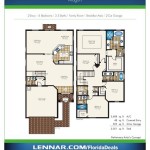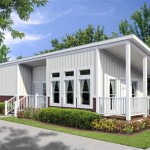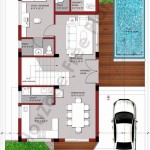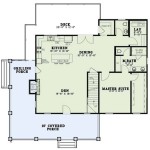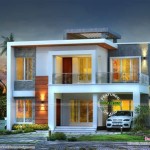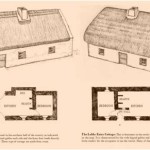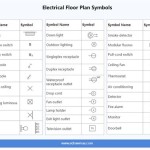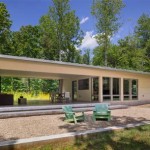Multigenerational Home Plans: Designing for a Shared Future
Multigenerational living is a growing trend, fueled by factors like rising housing costs, an aging population, and a desire for closer family connections. This living arrangement involves two or more generations of a family residing under one roof, creating both opportunities and challenges. Consequently, the demand for homes designed specifically to accommodate multiple generations has increased significantly. Multigenerational home plans aim to create spaces that provide privacy and independence for each family unit while also fostering shared communal areas. Successful implementation of these plans requires careful consideration of layout, accessibility, and lifestyle needs.
The design of a multigenerational home goes beyond simply adding extra bedrooms and bathrooms. It necessitates a holistic approach that acknowledges the distinct needs and preferences of each generation living within the space. This includes considerations for privacy, noise levels, accessibility for elderly or disabled family members, and the creation of functional common areas that facilitate interaction and shared activities. Thoughtful planning can transform a potentially stressful situation into a harmonious living arrangement that benefits all involved.
Key Considerations in Multigenerational Home Design
Several key factors need to be addressed when designing a multigenerational home, ensuring a comfortable and functional living environment for all members. These considerations encompass layout, accessibility, privacy, and communal spaces, directly impacting the success and longevity of the shared living arrangement.
Layout and Floor Plan: The floor plan is arguably the most critical aspect of a multigenerational home design. It dictates how spaces are divided, how family members interact, and how much privacy each unit can enjoy. A popular approach involves creating separate living suites or wings within the home. These suites typically include a bedroom, bathroom, living area, and sometimes a kitchenette, providing a self-contained space for the elderly parents or adult children. Another option is to adapt existing homes by adding an accessory dwelling unit (ADU), which can be a detached structure, an addition to the main house, or a converted basement or attic.
The layout should also consider the flow of traffic within the home, minimizing disruptions and ensuring easy access to common areas for all residents. Consider wider hallways and doorways, especially if elderly individuals with mobility issues will be residing in the home. Strategically placed entry points and exits can also enhance privacy and independence for each family unit. In some cases, separate entrances for the main house and the individual suites might be desirable.
Careful consideration of vertical separation may also be necessary. Homes with multiple stories can be designed to accommodate different generations on separate levels, minimizing noise transfer and promoting privacy. Elevators or chairlifts can be incorporated to ensure accessibility for individuals with mobility limitations.
Accessibility: Designing for accessibility is crucial, particularly when elderly or disabled family members are involved. This goes beyond simple accommodations like ramps and grab bars. Universal design principles should be implemented throughout the home to create a safe and comfortable environment for everyone, regardless of their physical abilities. Universal design incorporates features that are usable by a wide range of people, regardless of their age, size, or abilities.
Key accessibility features to incorporate include: wider doorways and hallways to accommodate wheelchairs or walkers; lever-style door handles that are easier to grip; roll-in showers with bench seating; adjustable-height kitchen countertops; and well-lit pathways and entryways to prevent falls. Non-slip flooring is also essential, especially in bathrooms and kitchens. Smart home technology, such as voice-activated lighting and appliances, can further enhance accessibility and independence for individuals with limited mobility.
Additionally, consider the placement of essential amenities on the main floor, such as bedrooms, bathrooms, and laundry facilities, to minimize the need for stair climbing. If a multi-story home is unavoidable, an elevator or stairlift should be incorporated to ensure that all levels are accessible to everyone.
Privacy and Noise Reduction: Maintaining privacy is paramount in a multigenerational living arrangement. Without adequate privacy, tensions can arise, leading to discomfort and strained relationships. Strategies for enhancing privacy include creating separate living suites with dedicated entrances, incorporating soundproofing materials in walls and floors, and strategically placing bedrooms away from common areas. Landscaping can also be used to create visual barriers between outdoor spaces.
Noise reduction strategies are particularly important, especially when children are involved. Soundproofing materials, such as insulated walls and ceilings, can help to minimize noise transfer between living areas. Solid-core doors and double-paned windows can further reduce noise levels. Consider the placement of bedrooms relative to noisy areas, such as the kitchen and living room. Incorporating soft surfaces, such as rugs and curtains, can also help to absorb sound.
Designated quiet zones, such as a library or study, can provide a refuge for individuals who need a peaceful space to work or relax. Headphone usage can be encouraged in shared spaces to minimize distractions. Establishing clear communication about noise levels and respecting each other's need for quiet time is also crucial.
Integrating Communal Spaces
While privacy is essential, communal spaces are equally important for fostering family interaction and a sense of togetherness. These spaces should be designed to be inviting and functional, accommodating a variety of activities. Common areas might include a shared kitchen, dining room, living room, outdoor patio, or recreation room. These spaces can serve as central hubs for family gatherings, meals, and entertainment.
The design of communal spaces should be flexible and adaptable to accommodate different needs and preferences. Modular furniture can be rearranged to suit various activities, and storage solutions should be incorporated to keep the space organized and clutter-free. Consider the seating arrangements and ensure that there are enough comfortable chairs and sofas for everyone. Good lighting is also essential, creating a warm and inviting atmosphere.
The kitchen is often the heart of the home, and in a multigenerational setting, it serves as a central gathering place for meals and conversations. A large, well-equipped kitchen with ample counter space and storage can accommodate multiple cooks and facilitate shared meal preparation. Consider adding a second sink or dishwasher to streamline meal cleanup. A breakfast bar or island can provide additional seating and workspace.
Outdoor spaces can also serve as valuable communal areas. A patio, deck, or garden can provide a relaxing and inviting space for family gatherings, barbecues, and outdoor activities. Consider adding comfortable seating, a dining table, and a grill to create a functional outdoor living area. Landscaping can be used to create privacy and enhance the aesthetic appeal of the space.
Financial and Legal Considerations
Beyond the physical design, financial and legal aspects play a significant role in the success of multigenerational living. Clear communication and planning are essential to avoid misunderstandings and conflicts. Topics such as ownership, financial contributions, and responsibilities for maintenance and repairs should be addressed upfront and documented in a legally binding agreement.
Ownership and Financing: Determining ownership of the property and how it will be financed is a fundamental step. Options include joint ownership, where all contributing family members are listed on the title, or individual ownership, where one family member owns the property and leases space to the others. Each option has different legal and financial implications, so it's essential to consult with a real estate attorney and financial advisor to determine the best approach for your specific situation.
Financing a multigenerational home can be complex, especially if multiple family members are contributing financially. Lenders may require documentation of each family member's income and credit history. Exploring options such as co-borrowing or guarantor arrangements can help to secure financing. It's also important to consider the tax implications of different ownership structures and financing options.
Legal Agreements: A legally binding agreement, such as a cohabitation agreement or a lease agreement, can help to clarify each family member's rights and responsibilities. This agreement should address issues such as financial contributions, utility bills, maintenance responsibilities, and rules for shared spaces. It should also outline procedures for resolving disputes and for terminating the agreement if one or more family members decide to move out. Consulting with an attorney to draft a comprehensive agreement can help to prevent misunderstandings and conflicts down the road.
Zoning Regulations and Permits: Before embarking on a multigenerational home design or renovation project, it's crucial to check local zoning regulations and obtain the necessary permits. Many municipalities have specific regulations regarding accessory dwelling units (ADUs) or multi-family dwellings. Failure to comply with these regulations can result in fines or legal action. Ensure that your proposed design meets all applicable zoning requirements and obtain all necessary permits before starting construction.
By carefully considering these key points and addressing both the physical and legal aspects of multigenerational living, families can create homes that foster connection, provide support, and enhance the quality of life for all generations involved. A well-designed multigenerational home can be a valuable asset that provides long-term benefits for the entire family.

Best Multigenerational Homes Four Generations One Roof House Plans New Next Gen

Fun Functional Multigenerational House Plans Houseplans Blog Com

Multigenerational Floor Plans Are Perfect For Extended Households

How To Build The Perfect Multi Generational Home Plans Included Oberer Homes

Multi Generational Homes Finding A Home For The Whole Family

Multi Gen Homes D R Horton

Multi Generational Ranch Home Plan With 1 Bed Apartment Attached 70812mk Architectural Designs House Plans

How To Build The Perfect Multi Generational Home Plans Included Oberer Homes

Multigenerational Living Is It Right For You Wisdom Homes

Make Way For Multigenerational Housing Home Designs Combined Living

